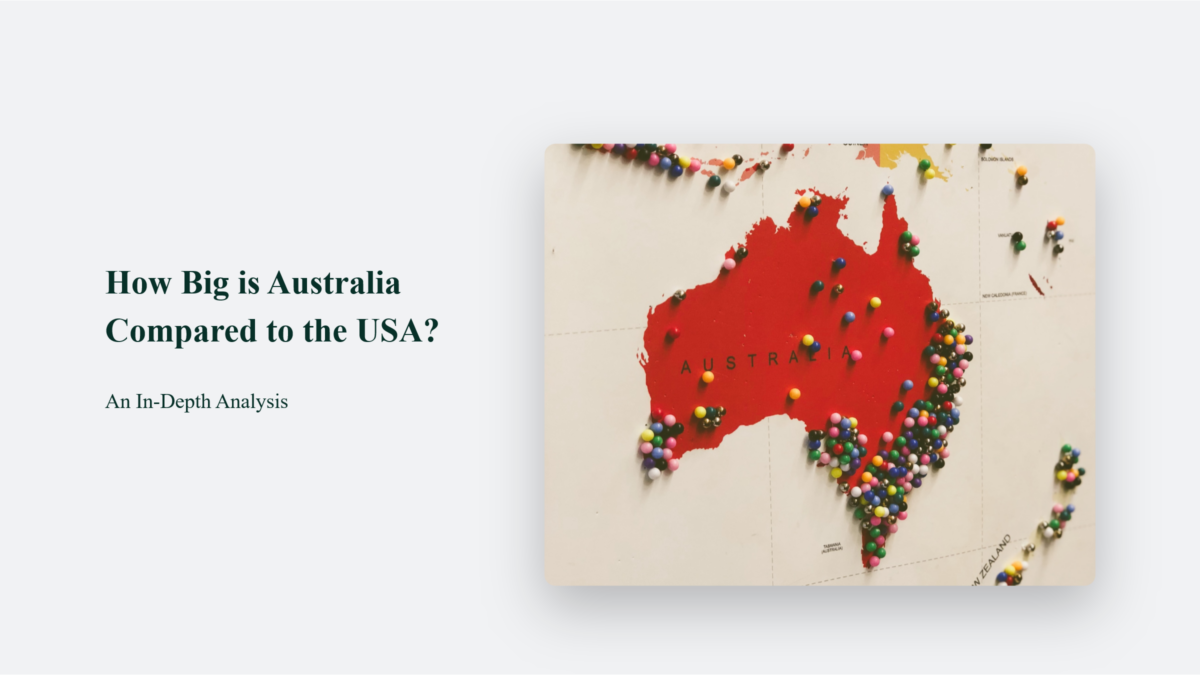Unraveling The Geographical Enigma: How Does Australia Stack Up Against The USA
When it comes to the world's most iconic countries, the United States and Australia often find themselves in the same conversation when it comes to natural wonders, climate, and overall geographical uniqueness. Both nations boast an incredible diversity of landscapes, climates, and wildlife, making it a challenge to determine which one comes out on top. In this article, we'll delve into the geographical characteristics of both countries, comparing and contrasting their landmasses, climate zones, and ecosystems to unravel the enigma of which country reigns supreme.
The first thing that comes to mind when thinking of Australia and the USA is their vastly different geographical locations. Australia is an island nation situated in the Southern Hemisphere, approximately 9,000 miles (14,444 km) southeast of the Asian continent. In contrast, the USA is a vast continent that covers much of North America, stretching from the Pacific coast to the Atlantic coast. This difference in location has had a profound impact on the climate, geography, and ecosystems of each country. Australia's tropical climate in the north gives way to arid deserts in the center, while the USA experiences a vast range of climates, from tropical in Hawaii to arctic in Alaska.
One of the most striking differences between the two countries is their size. The USA is the world's third-largest country, with a total area of approximately 3.8 million square miles (9.8 million square kilometers). Australia, on the other hand, is the sixth-largest country, with a total area of around 2.7 million square miles (7 million square kilometers). Despite their differences in size, both countries boast an incredible diversity of landscapes, from the Grand Canyon in the USA to the Great Barrier Reef in Australia.
Landmasses and Coastlines
Comparing the 48 States to Australia's 6 States
The USA has 48 contiguous states, which cover a significant portion of the North American continent. From the Pacific coast to the Atlantic coast, the USA's diverse landmasses are characterized by vast deserts, dense forests, and towering mountain ranges. In contrast, Australia's 6 states and 2 territories are scattered across the continent, with the mainland states of New South Wales, Victoria, Queensland, South Australia, Western Australia, and Tasmania.
When comparing the landmasses of the two countries, it's clear that the USA has a much larger total area. However, Australia's coastline is significantly longer, with over 25,000 miles (40,200 km) of coastline compared to the USA's 12,383 miles (19,926 km). This longer coastline has given rise to a rich marine ecosystem, with an incredible array of coral reefs, kelp forests, and estuaries.
Island States and Sea-Coast Interactions
Australia's island nation status has led to unique interactions between the sea and the coastline. The country's 10,434 islands, including Tasmania and the Great Barrier Reef, are home to a diverse range of marine life. The USA's coastline, on the other hand, is characterized by a more uniform shoreline, with fewer islands and a greater emphasis on continental interactions.
National Parks and Wildlife Reserves
Both countries have a rich array of national parks and wildlife reserves, protecting some of the most unique and fragile ecosystems on the planet. The USA is home to over 400 national parks, including Yellowstone, Yosemite, and the Grand Canyon. Australia, meanwhile, boasts over 500 national parks and reserves, including the Kakadu National Park and the Great Barrier Reef Marine Park.
Wildlife and Ecosystems
When it comes to wildlife, both countries have an incredible array of unique species. The USA is home to polar bears, grizzly bears, and wolves, while Australia boasts a diverse range of marsupials, including kangaroos, koalas, and wombats.
Marine Life and Ecosystems
The oceans surrounding both countries are home to an incredible array of marine life. The USA's Pacific coastline is home to gray whales, sea otters, and humpback whales, while Australia's Great Barrier Reef is one of the most biodiverse ecosystems on the planet, with over 1,500 species of fish and 600 species of coral.
Climate Zones and Weather Patterns
Temperature and Seasonal Variations
The USA and Australia experience vastly different temperature and seasonal variations. The USA is known for its extreme weather patterns, with temperatures ranging from -20°C in Alaska to 50°C in Death Valley. Australia, on the other hand, has a more moderate climate, with temperatures ranging from 10°C in Tasmania to 40°C in the northern territories.
Precipitation Patterns
Both countries experience a range of precipitation patterns, from tropical in Hawaii to arid in the western states. The USA is also home to some of the most intense precipitation patterns on the planet, including tornadoes and hurricanes.
Climate Change and Adaptation
As both countries grapple with the challenges of climate change, it's clear that the USA and Australia have different approaches to adaptation. The USA has implemented a range of policies aimed at reducing greenhouse gas emissions, while Australia has been more focused on economic growth and development.
Ecosystems and Land-Use
The USA and Australia have different approaches to land-use and ecosystem management. The USA has a more developed agricultural sector, with a focus on corn, soybeans, and wheat. Australia, on the other hand, has a more focused approach to conservation, with a strong emphasis on protecting native wildlife and ecosystems.
Research and Development
Both countries have a strong focus on research and development when it comes to climate change and adaptation. The USA has invested heavily in climate change research, with a range of initiatives aimed at reducing greenhouse gas emissions and promoting sustainable development. Australia has also invested in climate change research, with
Brad Pitt Height In Feet
Skyes In 2024
Matthew Labyorteaux
Article Recommendations
- Safaiddiqui Age
- Seopetition Tracker
- Hisashi Ouchi Real Images
- Debby Clarke Belichick
- Drew Barrymore
- Brooke Monk
- Net Ubbed
- Maal
- Sophie Rain Fans
- Amerigo Vespucci



